Building a 1924 Roster in C&Sn3
12





12
Re: Building a 1924 Roster in C&Sn3
|
Speaking of 1924 D&RG(W) boxcars, my friend Dale Kreutzer was way ahead of me in building 1924 cars. He set his Sn3 RGS Southern Division layout in the summer of 1925, in the middle of the D&RGW's narrow gauge car rebuilding program so he could build models of pre-rebuild cars and those recently rebuilt. Two examples:
 Dale built this older 3000 series boxcar 3227 by kit-bashing an Overland C&S phase 3 SUF boxcar body, to replicate the original narrow 5 1/4" MCB center groove sheathing. He then added an Evergreen scribed styrene roof, and PBL D&RGW boxcar hardware. 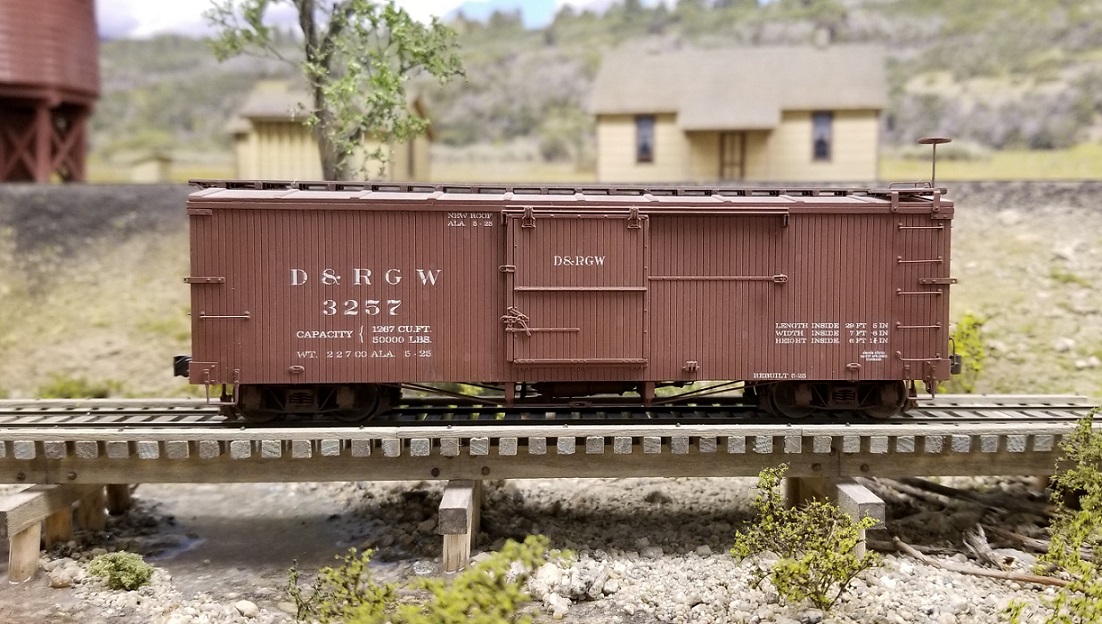 He has also built several rebuilt 3000 series boxcars and lettered them as they emerged from the Alamosa shops, before the heralds were applied, as in the Beam photo of 3303 in the Narrow Gauge Pictorial III. I think that I need one of each!
Jim Courtney
Poulsbo, WA |
Re: Building a 1924 Roster in C&Sn3
|
In reply to this post by Jim Courtney
Jim
You are correct the the 3000's and 32's were built with inside metal roofs. The is a McClure picture posted several years ago on the forum of Salida that has a 3000 on the RIP track getting a new wood roof. Pat |
Re: Building a 1924 Roster in C&Sn3: Refurbishing Old Stuff
|
In reply to this post by Jim Courtney
Edit: I moved this post down, so the discussion about the C&S and D&RG reefers / boxcars was uninterrupted.
I started building Sn3 models of C&S equipment back in 1985. Over the next 20 years, I completed a number of freight car models, all painted and lettered in the late 20's / early 30' button scheme, using Thinfilm decal sets. Most then sat in a display case, while some (including the green-hued reefers) were sold. About a year ago, when the urge to model 1924 reared up, I took stock of those completed models. It seemed like the best way to jump start a 1924 roster was to re-purpose the older stuff. So I sat about updating the models and preparing them for a new paint job: --All white metal TSM and old Grandt Line trucks were discarded and replaced with free rolling PBL Bettendorf trucks, with code 88 metal wheel sets. All wheel sets were painted "roof brown" in a Banta tread mask. --All older details were replaced when possible with newer parts. This included the older Grandt Line stirrup steps that are over scaled, replaced by PBL stirrups. Older white metal and plastic brake wheels were replaced with Grandt Delrin parts. --All cast Delrin break gear was replaced with scale wire, using PBL clevises, new chain roller brackets (PBL or Berlyn) and scale chain installed. --All the original lettering was carefully removed with fiber glass eraser and 800 grit sanding sticks, avoiding marring the plastic surfaces. Any broken parts after this manhandling were replaced. All so far have been repainted with my standard "Rock Island Maroon" acrylic paint from Polyscale. All have been re-lettered with the C&S block monogram lettering using San Juan decals (unavailable when the models were first built). Boxcars at Baileys 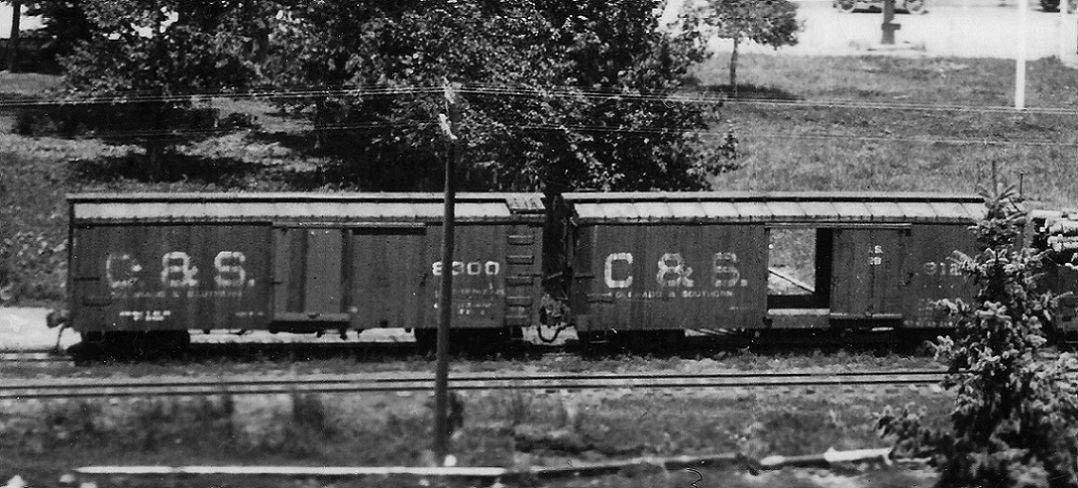 The two 1926 Ducca postcard prints of Baileys, with the string of freight cars on the siding, were the first photographs purchased for my C&S photo collection. Over the years I have studied the details hidden in the photos, using magnifying glasses, surgical dissecting microscopes and now by high-res scans on my computer. The two boxcars in the block lettering first interested me in this time period. 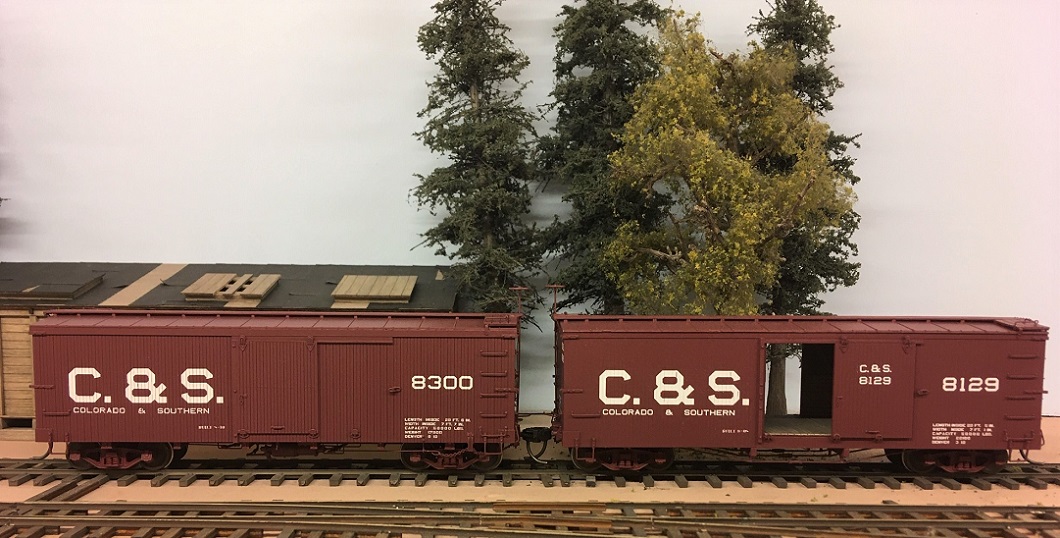  Phase 3 SUF boxcar 8300 was built from an Overland kit, with new Evergreen styrene body to correct the too short height. Phase 2 boxcar 8129 was built from a Berlyn kit, but full interior sheathing was added using stained stripwood (IMO a waste of time, because it is almost impossible to see). Both need a lot of weathering for the 1924 time frame. I figure for 1924 that I'm going to need at least half-dozen more phase 3 cars, 2 or 3 more phase 2 cars and a few odd cars like the St Charles boxcars and 1907 phase 1 boxcars. I have kits for building and kit-bashing them stashed away ,with newer ideas of how to better build them. Buffalo Phase 2 Coal Car:  This is one of my favorite photos in Grandt's Narrow Gauge Pictorial and inspired this 1989 scratch built model:   The coal car was scratch built from Evergreen styrene several years before Berlyn produced an injection molded kit. Each stake is a scale 4x4 with individual NBW applied, and wire U-bolts attaching them to the side sills. The detail parts are a mixture of Triangle Scale Models white metal parts (including draft gear that used old Kadee No. 4 couplers) and Grandt Line corner irons, turn buckles, etc. The original white metal Bettendorf trucks made it more of a sled than a free rolling freight car. The interior was my first and last attempt at scratch paint weathering. As I neglected to allow for adequate weight, it is always loaded with a Stewart hydrocal coal load. The Berlyn (now PVC) phase 2 kit builds into a much more accurate model, but I deemed this refurbished model to be adequate for operating on a layout. One interesting lettering detail I noticed in the prototype photo, is the dimensional data--cars shopped and repainted after 1916 had their dimensional data repainted in a Roman font. Other's continue to carry the original 1908 Gothic lettering, if legible, with new weights and weight dates using the Roman font. Both types of dimensional data are included in the San Juan coal car detail set. These three cars were just completed a week ago, you can still smell the Dull Cote sealing coat. More photos of refurbished cars to follow.
Jim Courtney
Poulsbo, WA |
Re: Building a 1924 Roster in C&Sn3: Refurbishing Old Stuff
|
This post was updated on .
Phase 2 Stock Car 7046:
For some reason Sn3 commercial kits for C&S freight cars tend to have height problems. The Overland / PBL phase 3 SUF boxcar tends to be about 2.5-3.0 scale inches too short. The Berlyn kit in Sn3 for the Phase 2 stock car is likewise about 3.0 scale inches too tall. The phase 2 stock cars were the 2nd tallest freight cars operated by the C&S, at 10'5" from rail to running board (the St Charles reefers were the tallest at 11'0"). But the Berlyn kit is noticeably too tall. Four years ago, we discussed how to modify the kit to correct the height: http://c-sng-discussion-forum.41377.n7.nabble.com/Berlyn-Sn3-C-amp-S-Stock-Car-Kits-td7393.html#a7401 I finally finished repainting and lettering my modified Berlyn kit for a double decked phase 2 stock car: 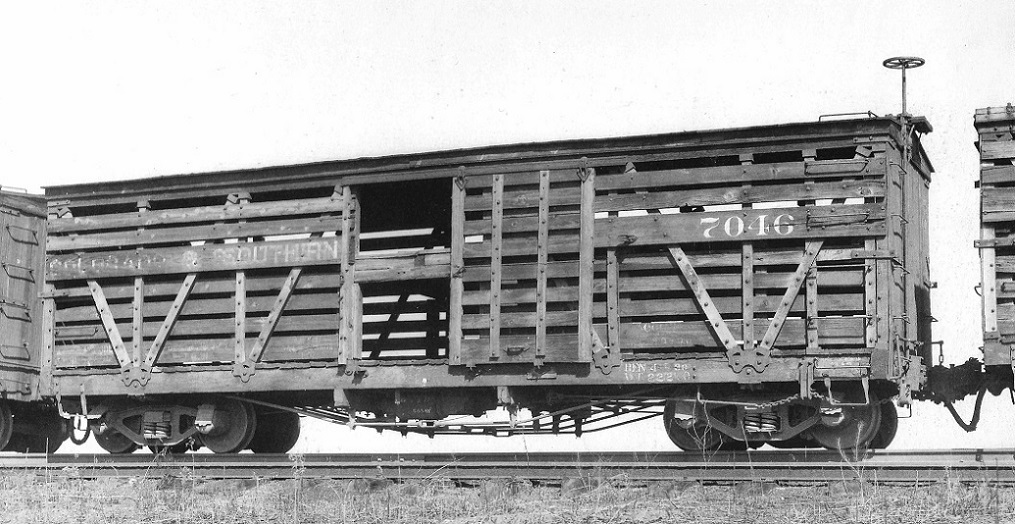   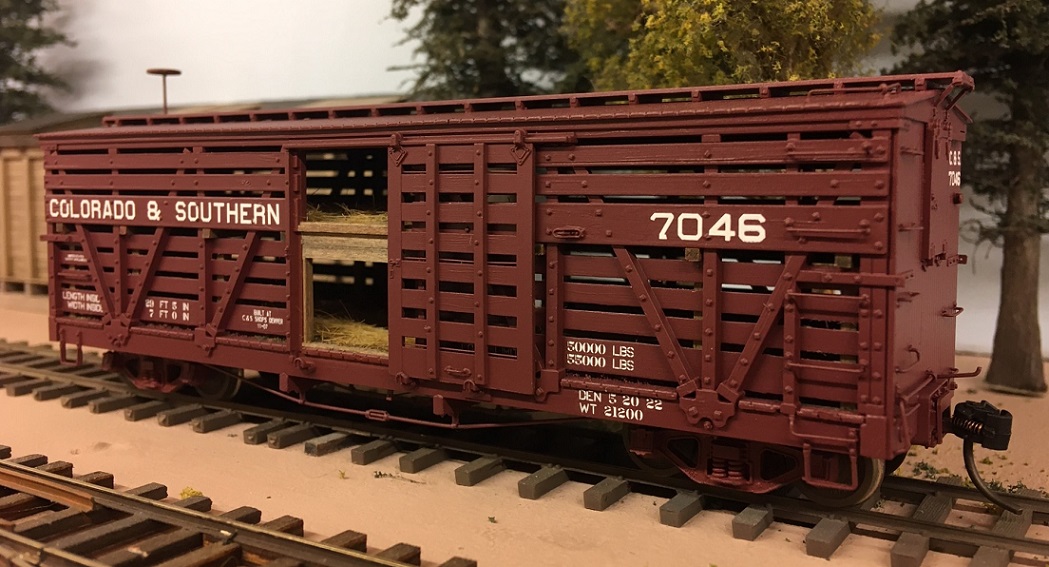 The most tedious part of the repaint process was masking off the interior support posts for the upper deck, so that they remained weathered, unpainted wood, and didn't disappear into a sea of red paint. I lettered the car for 1924 with a San Juan decals set. I "bedded" both decks with Woodland Scenic's fine brown ground foam for dirt and the same company's tall field grass, cut up to represent straw. So my stock car is ready for sheep loading at Denver, to transport the flock to the cool summer pastures above Solitude siding (today known as the Copper Mountain Ski Resort): http://c-sng-discussion-forum.41377.n7.nabble.com/Solitude-Siding-Spur-Sheep-td6607.html The phase two stock cars were built in November of 1907 and numbered 7065-7084, plus three odd numbers to replace wrecked phase 1 stock cars, numbers 7016, my 7046, and 7058, for a total of 23 such cars. I don't know which cars in this group were given double decks, but at least 7075 was also so equipped, going to the RGS with the other Miller cars, as RGS number 7351: 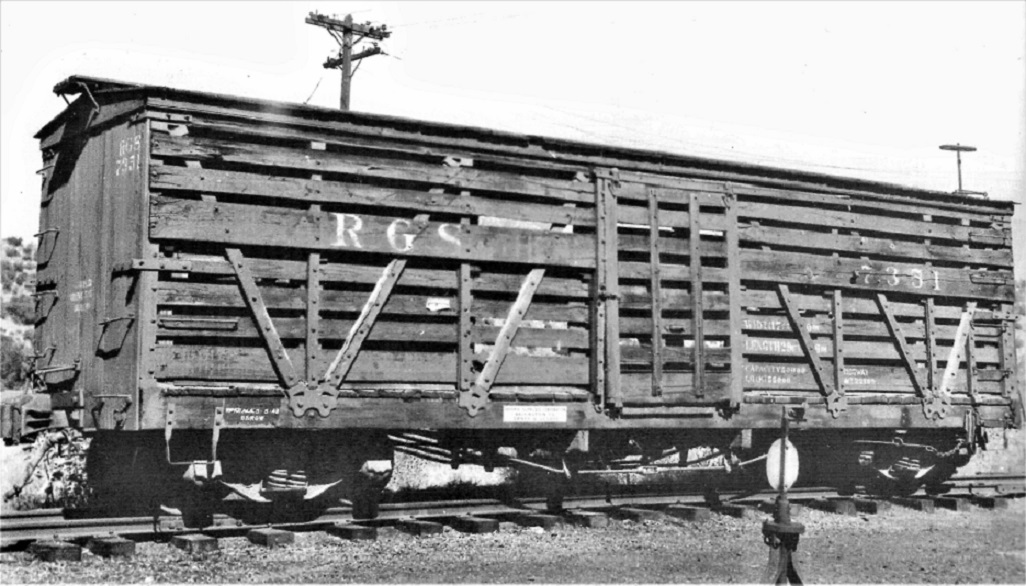 Note that 7075 / 7351 had no end door on the A-end. I have four more Berlyn kits to build, as they appeared when new, for my 1909 roster . . .
Jim Courtney
Poulsbo, WA |
|
This post was updated on .
CONTENTS DELETED
The author has deleted this message.
|
Re: Building a 1924 Roster in C&Sn3: Refurbishing Old Stuff
|
Jim---
Thanks for the car numbers for the DD phase 2 stock cars. Do you have any info as to when the double decks were first installed??
Jim Courtney
Poulsbo, WA |
|
I am starting over. The double decked cars are as follows per Derrell Poole's list.
Wood Frame Cars (17): 7015, 7017, 7019, 7021, 7022, 7024, 7025, 7032, 7034, 7038, 7039, 7042, 7045, 7048, 7049, 7050, 7060. Wood Frame Cars with Bettendorf trucks (8): 7046, 7058, 7066, 7068, 7070, 7075, 7076, 7083. Steel Frame Cars (28): 7087, 7088, 7090, 7091, 7092, 7093, 7094, 7096, 7097, 7098, 7099, 7100, 7101, 7102, 7103, 7104, 7106, 7108, 7110, 7111, 7112, 7113, 7115, 7116, 7118, 7121, 7133, 7134. I don't have any info on when the second deck was added to these cars. However, if the work was done on these cars at the same time, an AFE may have been created to cover the cost, and maybe the documentation would be at the CRRM. |
«
Return to C&Sng Discussion Forum
|
1 view|%1 views
| Free forum by Nabble | Edit this page |

